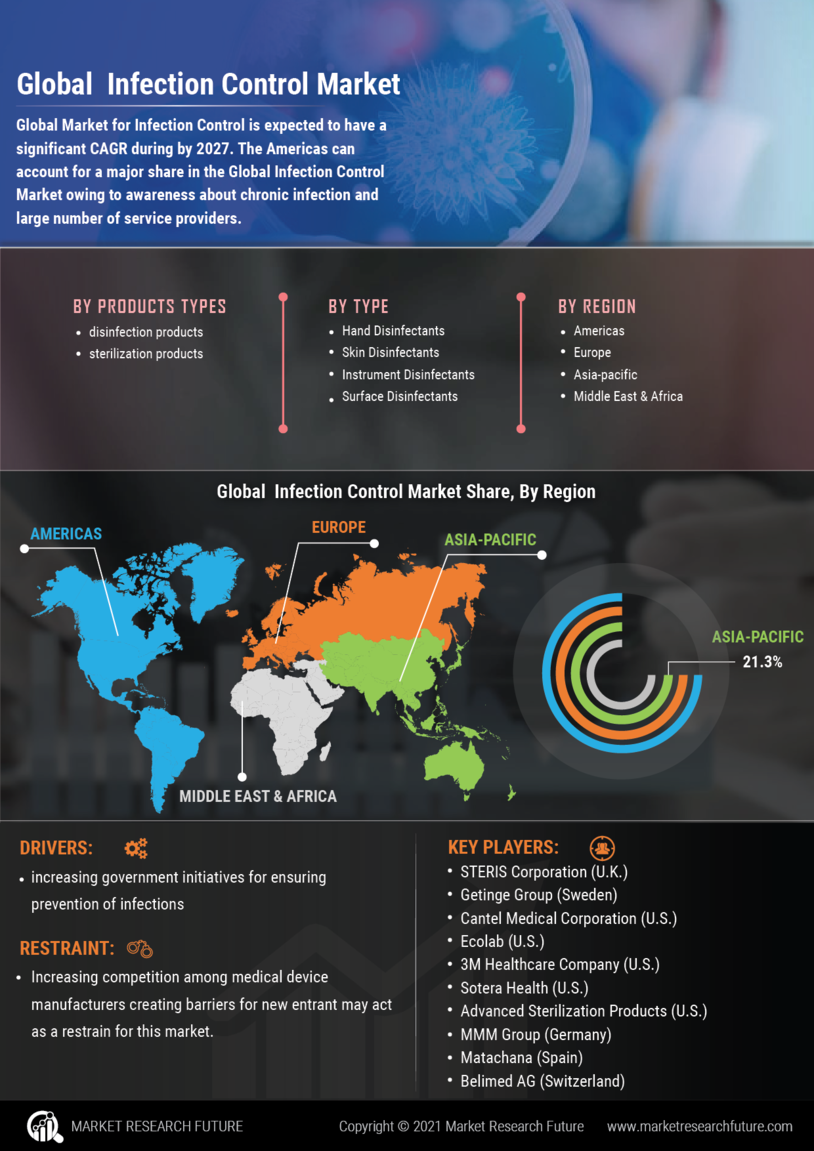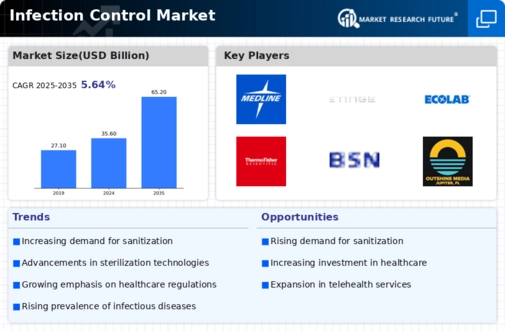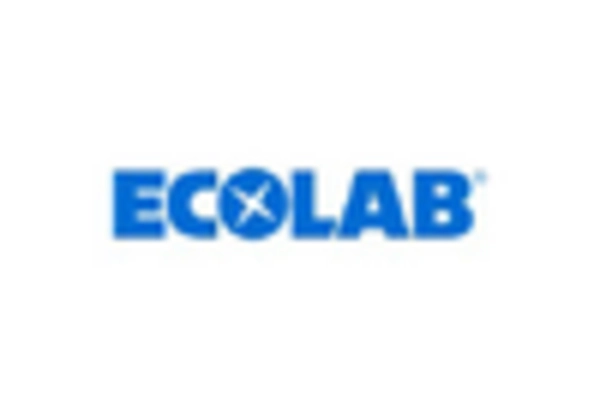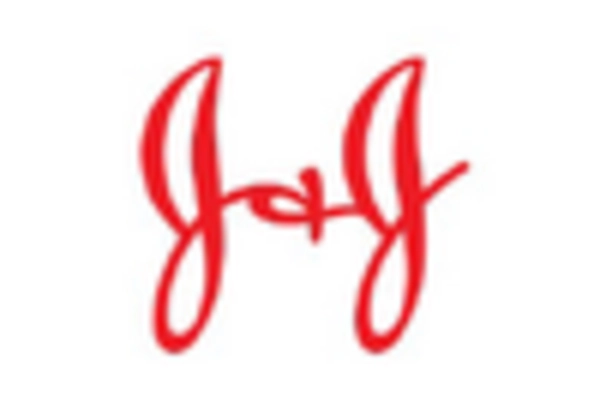Increased Regulatory Scrutiny
The Infection Control Market is significantly influenced by increased regulatory scrutiny and compliance requirements. Governments and health organizations are implementing stringent regulations to ensure the safety and efficacy of infection control products and practices. This regulatory landscape compels healthcare facilities to adopt best practices and invest in high-quality infection control solutions. Compliance with standards set by organizations such as the Centers for Disease Control and Prevention (CDC) and the World Health Organization (WHO) is essential for healthcare providers. As a result, the demand for certified infection control products is on the rise, contributing to market growth. The emphasis on regulatory compliance not only enhances patient safety but also fosters innovation within the Infection Control Market.
Rising Awareness of Infection Prevention
The increasing awareness surrounding infection prevention is a pivotal driver in the Infection Control Market. As healthcare-associated infections (HAIs) continue to pose significant risks, stakeholders are prioritizing infection control measures. Educational campaigns and public health initiatives have heightened awareness among healthcare professionals and patients alike. This shift in perception is reflected in the growing demand for infection control products and services. According to recent estimates, the infection control market is projected to reach USD 25 billion by 2026, indicating a robust growth trajectory. This awareness not only influences purchasing decisions but also encourages healthcare facilities to adopt comprehensive infection control protocols, thereby enhancing patient safety and outcomes.
Rising Investment in Healthcare Infrastructure
Rising investment in healthcare infrastructure is a crucial driver for the Infection Control Market. As countries strive to enhance their healthcare systems, there is a concerted effort to improve infection control measures within hospitals and clinics. This investment encompasses the procurement of advanced infection control technologies, training for healthcare personnel, and the establishment of stringent protocols. According to recent reports, healthcare expenditure is expected to increase by approximately 5% annually, with a significant portion allocated to infection control initiatives. This trend not only bolsters the Infection Control Market but also underscores the commitment to improving patient safety and reducing infection rates across healthcare facilities.
Technological Innovations in Infection Control
Technological innovations are transforming the Infection Control Market, offering advanced solutions for infection prevention and management. The integration of automation, artificial intelligence, and data analytics into infection control practices is becoming increasingly prevalent. For instance, automated disinfection systems and real-time monitoring tools are gaining traction in healthcare settings. These technologies not only improve efficiency but also enhance the accuracy of infection control measures. The market for infection control technologies is expected to witness a compound annual growth rate (CAGR) of approximately 10% over the next few years, driven by the need for more effective and efficient infection control solutions. As healthcare facilities seek to leverage these innovations, the Infection Control Market is likely to experience substantial growth.
Growing Demand for Infection Control in Non-Healthcare Settings
The Infection Control Market is witnessing a notable expansion into non-healthcare settings, driven by the increasing recognition of infection risks in various environments. Industries such as food processing, hospitality, and education are increasingly prioritizing infection control measures to safeguard public health. This trend is particularly evident in the wake of heightened awareness regarding hygiene practices. The market for infection control solutions in non-healthcare sectors is projected to grow significantly, with estimates suggesting a potential increase of over 15% in the next few years. As organizations seek to implement effective infection control strategies, the Infection Control Market is likely to diversify and adapt to meet the unique needs of these sectors.


















Leave a Comment